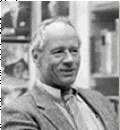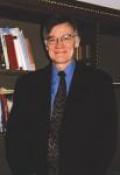The greater part of our national heritage is to be found in the record of our States. From the study of that record we can gain a renewal of our most precious possession, faith in the national ideal.
PROFESSOR OF HISTORY at Columbia and twice Pulitzer Prize-winning biographer, Allan Nevins pays a classic tribute to the value of historical study at the “grass roots” level in this thoughtful introduction to the new AMERICAN STATES SERIES.
This magazine will be devoted to the great task of bringing history to the people as a foundation for a stronger Americanism.
Friends of American Heritage gathered to celebrate 75 years of great writing and education about our nation's history.
Nearly 2,500 historians and authors have told the story of America in the pages of our magazine
You will find many treasures hidden in the American Heritage archives – more than 11,000 essays published over a span of 75 years. Nearly 2,500 writers contributed those stories that have literally become the memory of America.
The founding editor of American Heritage was the preeminent Civil War historian of the last century, and taught generations of writers how to write narrative history.
Bruce Catton w
He became the dean of American historians after learning his craft while working for five years on the staff of American Heritage.
It was a challenging couple of months after the flood, but our office will soon be operational again.
In 2020 we published nearly 100 articles in nine issues, the most we have ever published in a year. Here are the articles sorted by the approximate date of the subject of the essay:
In 2020 we published nearly 100 articles in nine issues, the most we have ever published in a year. Here are the articles sorted by issue:
A convenient index to the nearly 100 articles in American Heritage in 2020
In 2020 we published nearly 100 articles in nine issues, the most we have ever published in a year. Here are the articles sorted by the author of the article:
Nearing its 70th anniversary, the magazine was relaunched in digital format for 72,000 subscribers.
In 1958, my father was honored to join the staff of American Heritage, one of America’s most revered magazines, eventually becoming its Managing Editor and helping many historians strengthen their writing.
American Heritage, the beloved, 68-year-old magazine of history, returns to regular publication on our Nation’s Birthday, July 4, 2017.
Edwin Grosvenor and the largely volunteer staff of American Heritage Magazine are pleased to announce the digital publication of a new issue on July 4, 2017, our Nation’s birthday, several years after the magazine was forced to suspend print publication during the recession.
We celebrate one of America's greatest historians with an anthology of his writing.
More than 600 donors chipped in to help fund the re-launch of the magazine.
I recently picked up a 1961 issue of American Heritage and realized that the sign-up card bound into it for new subscribers had the same price ($15.00) that we were able to charge in 2012, more than a half century later.
A longtime contributor and former editor introduces the special anniversary issue.
READERS, I HAVE THE honor of introducing this birthday banquet of essays on critical moments in our nation's story by some of its ablest current thinkers. I even get to follow on the distinguished heels of President John F.
Reflections on the superb historian and American Heritage editor
For decades, Yale history professor David Blight, an award-winning author and a preeminent scholar of the Civil War, has studied the legacy of Bruce Catton, the historian/writer who significantly shaped our understanding of the Civil War by bringing it into exhilarating, memorable relief thro
In 1962, the president wrote for American Heritage that the study of history is no mere pastime, but the means by which a nation establishes its sense of identity and purpose.
Working on this, our 21st annual travel issue, reminded me that I am fortunate enough to have a most agreeable travel destination virtually under my feet. This is the Forbes Galleries in the company’s headquarters at 62 Fifth Avenue in New York City. I first visited them 20 years ago.
As this issue was going to press, we learned that Oliver Jensen had died.
Like the nation it covers, American Heritage was revolutionary at its birth. And, like that nation’s story, ours is a real cliffhanger.
It is rare for any magazine to live half a century.
The great storyteller and famed historian lent authority and good advice to our aspiring magazine.
Henry Steele Commager, one of the greatest American historians and a friend to this magazine for many years, died at his home in Amherst, Massachusetts on March 2, at the great age of 95.
For the 50th anniversary of Pearl Harbor, we devoted the entire December issue to the Second World War.
For thirty-five years now the editors of American Heritage have worked to verify the fundamental premise of the magazine, which is, simply, that history happens to everyone.
WAITING FOR THE MORNING TRAIN is Bruce Catton’s memoir of his boyhood in a small Michigan town named Benzonia—an etymologically suspect word that is supposed to mean “good air.
Oliver Jensen, who was for many years the editor of this magazine and who worked with Bruce Catton from its first publication in 1954, has written this account of what it was like to have him as a colleague. We are pleased to run it here as a tribute to our late distinguished senior editor, together with some side comments from others who enjoyed the privilege of “working with Bruce Catton.”
The longtime adviser to American Heritage wrote history not simply as a means of talking with other historians, but in order to talk to the general reader.
They say a tree is best measured when it is down. Allan Nevins is gone, at last, although he seemed imperishable, and we at AMERICAN HERITAGE feel a poignant sense of loss.
Our American heritage is greater than any one of us.
An 1857 12-pound Napolean cannon still guards the battlefield at Gettysburg. Photo by Craig M. Fildes.
The sun goes down every evening over the muzzle of a gun that has been a museum piece for nearly a century, and where there was a battlefield there is now a park, with green fields rolling west under the sunset haze to the misty blue mountain wall. You can see it all just about as it used to be, and to look at it brings up deep moods and sacred memories that are part of our American heritage.





